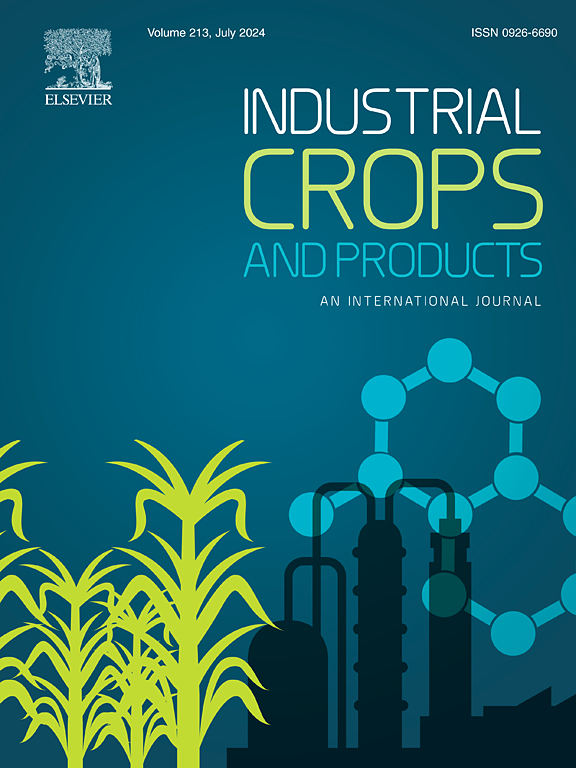The performance and prediction of converting forest residual biomass into solid biofuel, saving fossil fuel and reducing forest fire
IF 5.6
1区 农林科学
Q1 AGRICULTURAL ENGINEERING
引用次数: 0
Abstract
Converting forest residual biomass into solid biofuel not only transforms waste into renewable energy but also mitigates wildfire risks by reducing fuel in ecosystems. Sixty kinds of biochar were produced from the surface fuels of Dahurian larch, Mongolian Scots pine, Mongolian oak and Manchurian ash. The components and combustion properties were characterized by proximate analysis, ultimate analysis, thermogravimetric analysis and cone calorimeter analysis. The study employed advanced analytical and modeling techniques, including analysis of variance, correlation analysis, multiple regression, principal component analysis, Random Forest algorithms, and structural equation modeling, to systematically evaluate relationships and predict outcomes. From 300℃ to 700℃, forest fuel biochar has a yield of 25.50 % – 58.00 %, C of 56.55 % – 80.09 % dry matter, O of 4.46 % – 20.96 % dry matter, N of 1.11 % – 2.43 % dry matter, ash content of 5.74 % – 30.67 % dry matter, volatile matter content of 4.62 % – 25.14 % dry matter, fixed carbon content of 59.42 % – 82.95 % dry matter. Biofuels recover 80.68–36.18 % of energy from biomass and can be used in steam power plants and cement manufacturing. The usability of coniferous is better than that of broad-leaved leaves. Biochar produced at low temperatures has better and faster ignition and combustion performance, while biochar obtained at high temperatures burns more stably and completely, generating less smoke and CO. The elemental composition is the most significant factor influencing the performance and energy recovery. More suitable prediction equations for higher heating value and ash-free calorific value were obtained. The research has enhanced the availability of bioenergy production from forest residual biomass, offering dual benefits of mitigating wildfires and replacing fossil fuels.
森林剩余生物质转化为固体生物燃料、节约化石燃料和减少森林火灾的性能与预测
将森林剩余生物质转化为固体生物燃料不仅可以将废物转化为可再生能源,还可以通过减少生态系统中的燃料来减轻野火风险。以大湖落叶松、蒙古苏格兰松、蒙古橡树和满洲灰为表面燃料,制备了60种生物炭。通过近似分析、极限分析、热重分析和锥量热分析对其组分和燃烧性能进行了表征。本研究采用先进的分析和建模技术,包括方差分析、相关分析、多元回归、主成分分析、随机森林算法和结构方程建模,系统地评估关系并预测结果。从300℃到700℃,森林生物炭燃料产量25.50 % - 58.00 %, % C 56.55 - 80.09 %干物质,O 4.46 % - 20.96 %干物质,1.11 N % - 2.43 %干物质、灰分5.74 % - 30.67 %干物质,挥发分含量4.62 % - 25.14 %干物质,59.42的固定碳含量 % - 82.95 %干物质。生物燃料从生物质中回收80.68-36.18 %的能量,可用于蒸汽发电厂和水泥制造业。针叶树的可利用性优于阔叶树。低温下制备的生物炭具有更好更快的点火燃烧性能,而高温下制备的生物炭燃烧更稳定彻底,产生的烟雾和CO更少,元素组成是影响性能和能量回收最显著的因素。得到了更适合高热值和无灰热值的预测方程。这项研究提高了利用森林剩余生物质生产生物能源的可能性,提供了减轻野火和替代化石燃料的双重好处。
本文章由计算机程序翻译,如有差异,请以英文原文为准。
求助全文
约1分钟内获得全文
求助全文
来源期刊

Industrial Crops and Products
农林科学-农业工程
CiteScore
9.50
自引率
8.50%
发文量
1518
审稿时长
43 days
期刊介绍:
Industrial Crops and Products is an International Journal publishing academic and industrial research on industrial (defined as non-food/non-feed) crops and products. Papers concern both crop-oriented and bio-based materials from crops-oriented research, and should be of interest to an international audience, hypothesis driven, and where comparisons are made statistics performed.
 求助内容:
求助内容: 应助结果提醒方式:
应助结果提醒方式:


